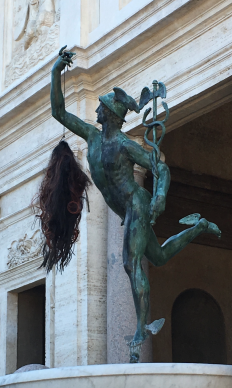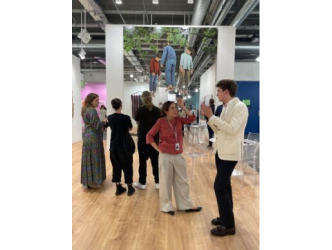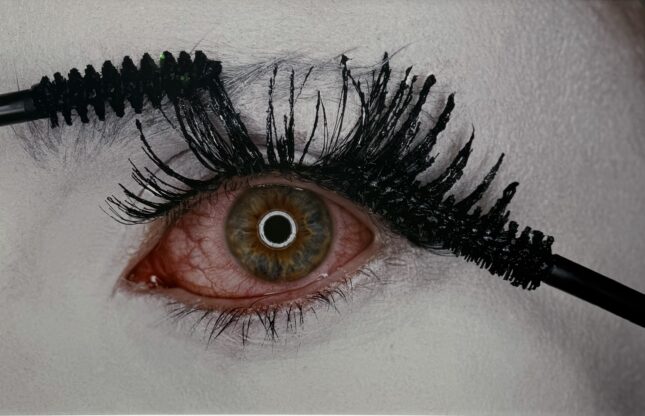
Irving Penn (Michael Hoppen Gallery)
What is a collection?
“The collection is a work of art that is offered up for viewing. At first, we advance as though in a forest, not knowing where we are, with no points of reference. But we meet people along the way with whom we enter into dialogue, and this is how we unconsciously train our eye.” These are the enlightened words of Pierre Apraxine. This early connoisseur of photography was quite probably the most informed eye of his time in the field. A former curator at Moma in New York, he was also the creator of a major collection, the Gilman Paper Company Collection, which was donated to the Metropolitan Museum.
Back at the Grand Palais
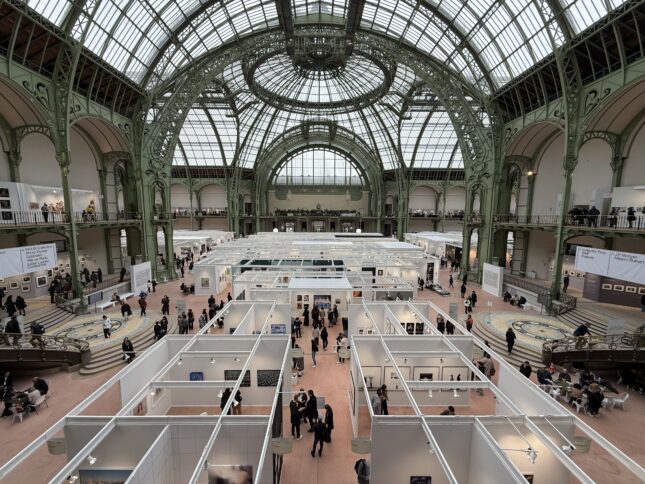
Paris Photo 2024
His memoirs, recently published in French (1), reveal the evolution of the recognition of photography in the second part of the 20th century. They are being published to coincide with the opening of Paris-Photo, the largest fair of its kind in the discipline, which returns to the Grand Palais for the current edition. From November 7 to 10 it is due to host 195 galleries reflecting the infinite variety of trends in this artistic medium that was invented not so long ago, in 1839.
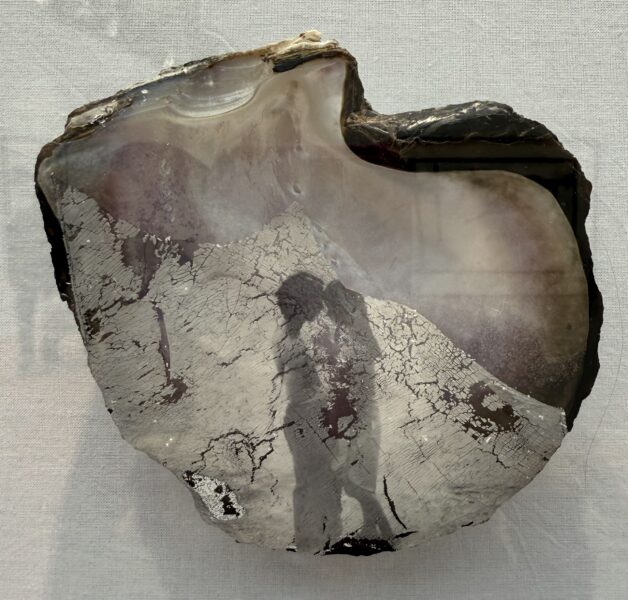
Yunya Yin(+3 gallery)
This year, one of the most striking things is the omnipresence of black and white, including in contemporary photography. It’s as if, in these troubled times, the offering aims to feel more reassuring, more classic.
Paris-Photo is the ideal place for dialogues, like the ones recommended by Pierre Apraxine.
19th-century photographs
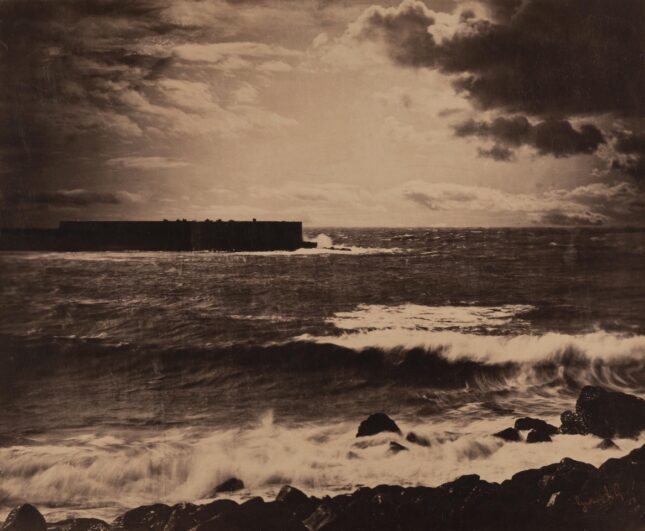
Gustave Le Gray (Tartarin)
The latter was an ardent champion of 19th-century photographic creation, both pioneering in the poetry of these early images, but also in its technical inventiveness. “We want to present photography over two centuries,” highlights the director of Paris-Photo, Florence Bourgeois. While today, due to a lack of demand, 19th-century photographs are becoming increasingly rare on the market.
Gustave Le Gray
We notice one of the most famous images from the 19th century at the booth of Parisian dealer Bruno Tartarin. It is the work of Gustave Le Gray (1820-1884), a former painter and great adventurer who was lost without trace during a trip to the East. From 1857 he started using photomontage to create a dramatic seascape: his “Grande Vague, Sète”. An immense sky, raging waves…
An other Grande Vague
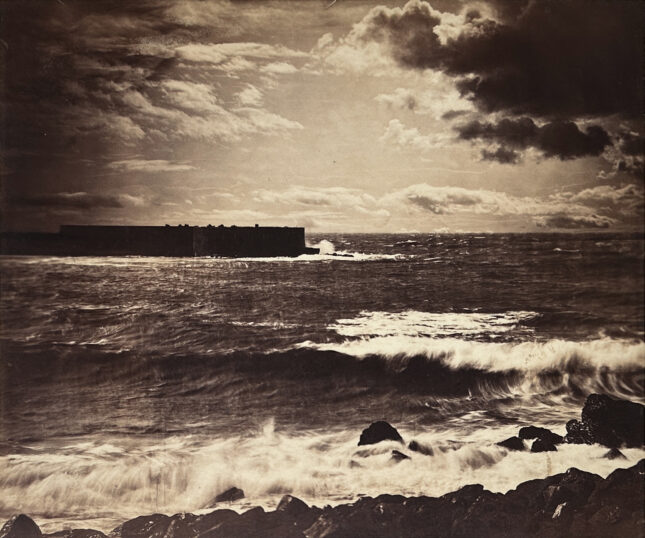
Gustave Le Gray (Le Mouel)
At the peak of the market, in 1999, a print of this image sold for the equivalent of 792,600 euros. At the time it was the highest price ever recorded at auction for a photograph. At Paris-Photo, Bruno Tartarin is presenting his print for 200,000 euros. Coincidentally, while it’s not a subject you come across frequently, at Hôtel Drouot on November 8 the auctioneer Yann Le Mouël is putting another “Grande Vague, Sète” up for sale, with an estimate of 100,000 euros. Here, the quality of the print (the colour contrasts) and the state of conservation make all the difference in the price obtained.
Jim Jarmusch
Like every year, Paris-Photo invites a public figure who makes a selection, a sort of virtual shopping list, from the plethora on offer from the galleries. This time it is American filmmaker Jim Jarmusch who is jointly presenting, from November 13, four films by the famous modern photographer Man Ray (1890-1976) under the title “Le Retour à la raison” (“Return to Reason”). Screened in a restored format in the Parisian theatres, they are accompanied by a musical score he composed with his group SQÜRL.
To appreciate is to support.
To support is to donate.
Support JB Reports by becoming a sustaining Patron with a recurring or a spontaneous donation.
Man Ray

Man Ray
These days Man Ray is the star of the high-end photography market. We recall how one of his single prints dating from 1924, “Le Violon d’Ingres”, which shows a nude young lady from behind, marked by “gills” (the slits of the violin), sold for 11.9 million euros in May 2022. An absolute record. At Paris Photo, Jim Jarmusch has selected at Bruno Tartarin’s booth a previously unpublished “Rayogram” dating from 1947, depicting jewellery and other small objects arranged haphazardly (on sale for 100,000 euros).
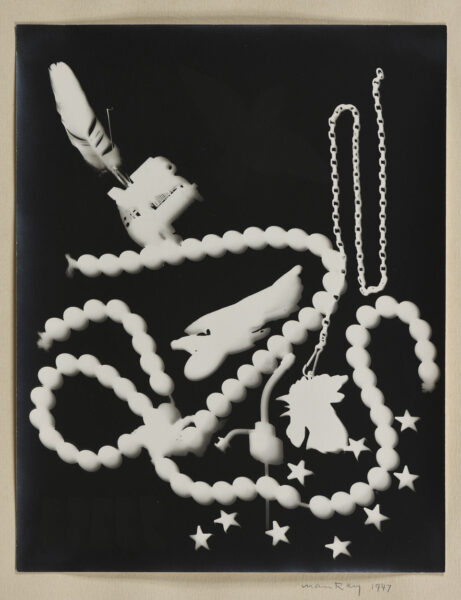
Man Ray
Abstract collages
It was Man Ray himself who developed this process in the 1920s – which has since been adopted by a number of contemporary artists – consisting of placing an object on photographic paper facing a powerful light source. As a reaction, the image imprints directly onto the support. Man Ray is also unexpectedly present at the booth of the “Les Douches” gallery, whose space is located in the 10th arrondissement of Paris. Around 1916, while Man Ray was still living in the United States – he arrived in Paris in 1921 – he created a whole range of abstract collages in coloured paper which he called “Revolving Doors”.

Man Ray
These are sets of juxtaposed strips of colour reminiscent of the Matisse works produced in the 1940s. In 1926, Man Ray produced lithographs of them. In 1973, three years before his death, he conceived ten tapestries measuring 1.97×1.47 cm on the same theme, which were displayed at the Fiac in 1975. In 2024 they were exhibited at the Les Douches gallery and at Paris-Photo. This edition of six copies is on sale for 50,000 euros.
Man Ray is a dog
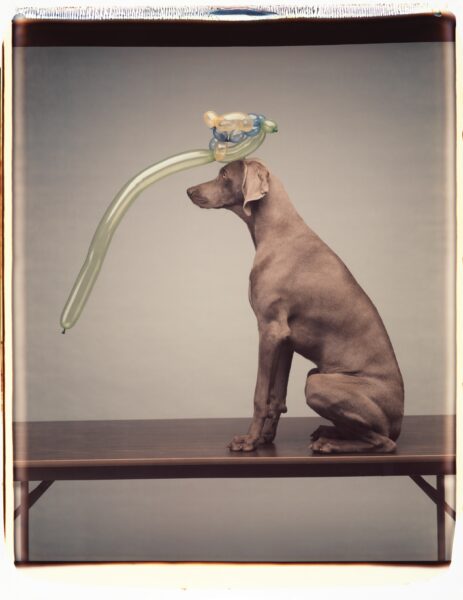
William Wegman
On a more humorous note, Man Ray is also the name the American photographer, William Wegman (born in 1942), has long given to his successive dogs/models, his Weimaraners, who he has photographed since the 70s in all imaginable poses. “They are ideal models, ones who take orders from you,” says Wegman, who has historically been placed in the category of conceptual artists.
William Wegman
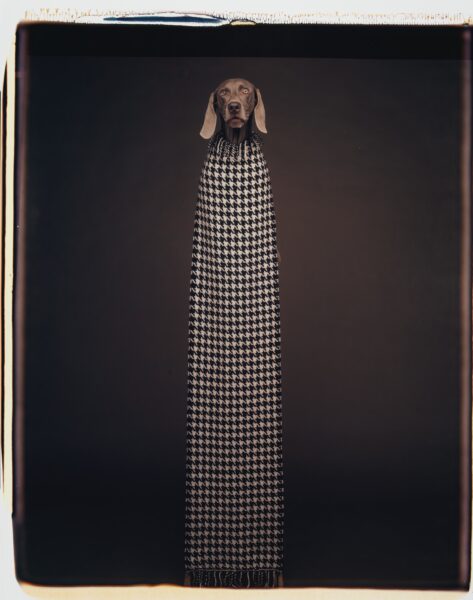
William Wegman
His work is now part of the collections at major museums around the world, from Los Angeles to Paris. We can see it as both a melancholic and mischievous way of revisiting the principles of traditional portraiture. Wegman also calls himself a painter. “I didn’t want to become a ‘dog artist’ even though that’s what happened. But I love photographing my dogs. It’s a shared fun activity.” The booth of Vallois gallery in Paris is entirely dedicated to him. Here we find an anthology of his canine productions, in particular oversized polaroids. Prices range from 21,000 to 25,000 euros. In recent years Wegman has been less in the spotlight and his auction record is still held by a sale from 1990, featuring a painting and not a photo of a dog, which sold then for the equivalent of 79,600 euros.
Hiroshi Sugimoto
One of the stars of Paris-Photo 2024 is the Japanese photographer who lives in New York, Hiroshi Sugimoto (born in 1948). He is the subject of a solo exhibition at the booth of the Fraenkel gallery from San Francisco. This multifaceted artist, who opened an exceptional site in 2017, a garden on the outskirts of Tokyo designed to admire the sunrise, the Enoura Observatory, likes to play with the classics of Japanese culture( See here a report about Enoura). In the excellent little exhibition dedicated to him at the Giacometti Institute in Paris in spring 2024, he recreated a scene from traditional Noh theatre using Giacometti’s sculptures( See here the report about the show at Institut Giacometti).
Japanese screen
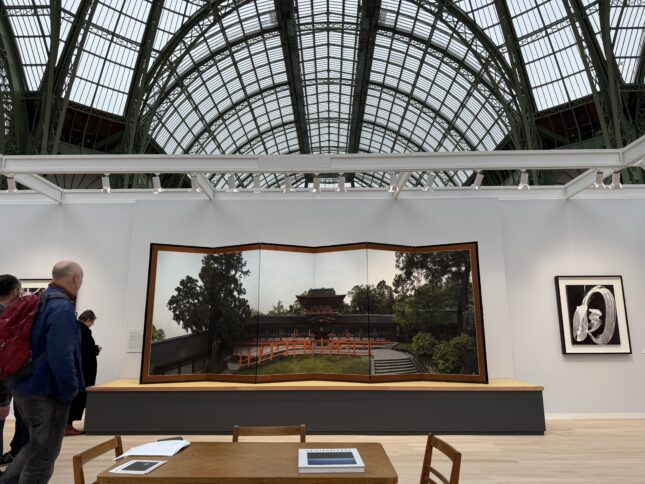
Hiroshi Sugimoto
At Paris-Photo you can see one of his large prints, designed in several sections in the style of a Japanese screen. “It all started when Sugimoto asked us to display his screen of the Great Kasuga Temple at dawn. We realized this image of the 8th-century temple in Nara would have a powerful effect in the context of the Art Deco roof of the Grand Palais,” explains Jeffrey Fraenkel.
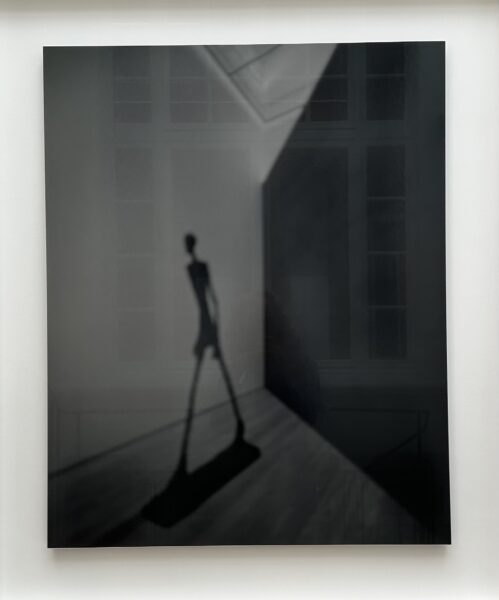
Hiroshi Sugimoto
The spectacular work dating from 2022 measures 5.4 metres in width (on sale for 500,000 dollars in an edition of 3). It is accompanied by an anthology of prints including those representing sculptures by Giacometti from 2013 (on sale for 60,000 dollars in a set of 10). For this subject he used a particular technique, the “double infinity focus”, which blurs the subject to reflect its “spirit” more than its precise shape. In 2007, a triptych by the artist depicting a seascape reached the record price of 1.3 million euros. Even if his prices no longer reach the peak of 2007, Sugimoto, widely represented in institutions around the world, is now one of the great classics of contemporary photography.
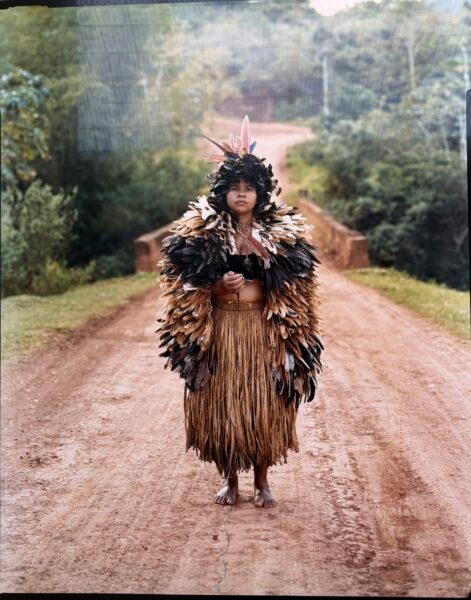
Livia Melzi(Salon H)
www.parisphoto.com/fr
(1) L’image à venir. Mémoires d’un collectionneur. Pierre Apraxine with Jean Poderos. Editions courtes et longues. 376 pages. 24 euros.
Support independent news on art.
Your contribution : Make a monthly commitment to support JB Reports or a one off contribution as and when you feel like it. Choose the option that suits you best.
Need to cancel a recurring donation? Please go here.
The donation is considered to be a subscription for a fee set by the donor and for a duration also set by the donor.



